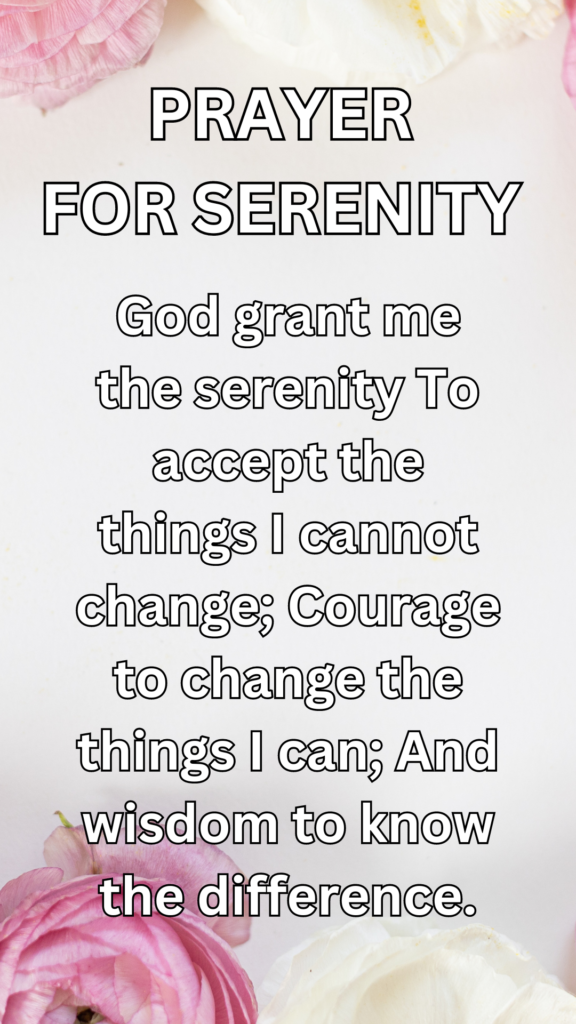In times of struggle and uncertainty, seeking solace and guidance often needs a blend of acceptance, courage, and wisdom. The Serenity Prayer, attributed to Reinhold Niebuhr, has connected deeply with many for its ageless wisdom and practical advice on handling life’s challenges. Let’s look into its meaning and significance.
The Serenity Prayer
“God, grant me the serenity to accept the things I cannot change, courage to change the things I can, and wisdom to know the difference.”
The Origin of The Serenity Prayer
The Serenity Prayer, was written by Reinhold Niebuhr around the early 1930s. It first emerged in a sermon he delivered and was thereafter incorporated as a component of his presentations and writings. The prayer garnered significant popularity for its profound message about acceptance, courage, and wisdom in handling life’s difficulties. Its ongoing appeal rests in its universal relevance across all faiths and beliefs, resonating strongly with persons seeking calm, wisdom, and spiritual strength amid tough circumstances.
Understanding the Prayer
Serenity
Acceptance of the Unchangeable: The prayer opens with a petition for peace, the calm acceptance of realities beyond our control. It accepts that not everything can be altered to meet our needs or expectations. This acceptance is vital for inner peace, allowing us to let go of futile resistance to circumstances.
Courage
Empowerment for Action: The prayer then asks for courage, the strength to influence change where it is feasible. It supports proactive involvement with life’s challenges, boosting resilience and determination in the face of hardship. Courage here isn’t just about physical courage but also about the bravery of spirit and conviction.
Wisdom
Discernment and wisdom: Lastly, the prayer seeks wisdom, the understanding to differentiate between what can and cannot be changed. This portion of the prayer highlights the significance of thoughtful reflection and understanding, leading our actions towards positive paths.
The Full Serenity Prayer
“God grant me the serenity To accept the things I cannot change; Courage to change the things I can; And wisdom to know the difference. Living one day at a time; Enjoying one moment at a time; Accepting hardships as the pathway to peace; Taking, as He did, this sinful world As it is, not as I would have it; Trusting that He will make all things right If I surrender to His Will; So that I may be reasonably happy in this life And supremely happy with Him Forever and ever in the next. Amen.”
Applying the Serenity Prayer in Daily Life
1. Embracing Acceptance:
Letting Go of Control: Accepting the things we cannot change cultivates peace of mind. It allows us to release the grip of annoyance and resentment over circumstances beyond our influence, encouraging emotional resilience and mental well-being.
2. Cultivating Courage:
Taking Initiative: Courage empowers us to take significant action. It motivates us to approach obstacles head-on, enabling personal growth and advancement. By embracing courage, we move beyond fear and complacency towards positive transformation.
3. Seeking Wisdom:
Making Informed Choices: Wisdom aids us in making informed judgments. It sharpens our ability to discriminate between what is viable to alter and what demands acceptance, ensuring that our efforts are focused and effective.
Conclusion
The Serenity Prayer serves as a timeless guidance for handling life’s ups and downs with grace and perseverance. Its message resonates across nations and faiths, offering a pathway towards inner peace and enlightenment. By accepting its values of serenity, courage, and wisdom, we can build a mentality that supports personal growth, emotional balance, and meaningful connection with the world around us.

